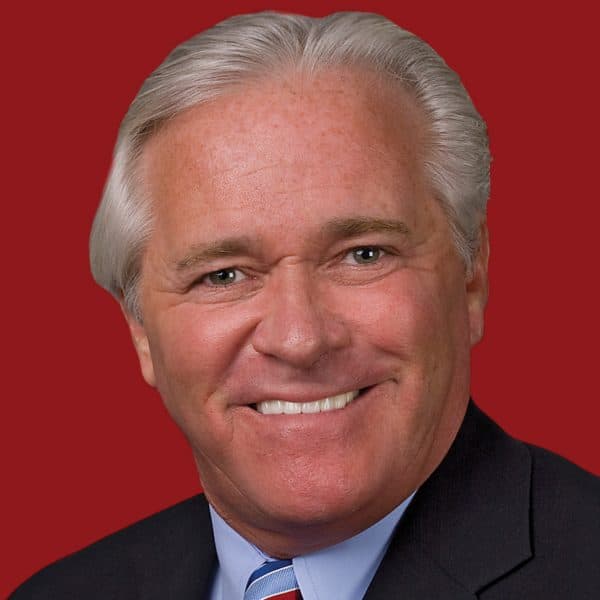Advertisement
A Better Way To Deal With Student Loans

Once upon a time, America invested in its young people so that they could enter the world without debt. College was meant to provide opportunity and strengthen the overall economy by creating a better- educated workforce. Looking at the numbers today, I can only think that our current system has failed this generation.
Student loan debt is crippling young Americans. Outstanding student loans now total more than $1.2 trillion and counting. In 2012, an astonishing 71 percent of college seniors owed student loans. What’s even more worrisome is that from 2004 to 2012, the average student loan balance increased by 70 percent.
Every day, debt prevents young people from moving out of their parents’ homes, building savings, purchasing homes, buying cars, starting small businesses, saving for retirement or making purchases that grow our economy.
It’s not just students who are suffering. The economy is taking a hit, too. A study by New York-based think-tank Demos estimates that the class of 2014 will graduate with an average of $26,000 in debt. This translates to an average household loss of more than $200,000 in future net assets.
Every day, debt prevents young people from moving out of their parents’ homes, building savings, purchasing homes, buying cars, starting small businesses, saving for retirement or making purchases that grow our economy. According to a recent study from the American Institute of CPAs, about three-quarters of student loan borrowers surveyed said that they — or their children — have been forced to make sacrifices in order to keep up with student loan payments. This includes 41 percent who have delayed retirement, 40 percent who have put off buying a car and 29 percent that have postponed home purchases.
What’s worse, one in five college grads who borrowed for tuition via the federal Direct Loans Program is not paying the money back, according to the Consumer Financial Protection Bureau. In addition, half of those graduates are taking jobs that do not even require a college degree, just to make ends meet.
Compounding the problem is the fact that new ideas and initiatives are met with obstruction and in-action. In the last congressional session alone, the Senate struck down legislation introduced by Sen. Elizabeth Warren (D-Mass.) that would have allowed 40 million Americans with outstanding student loans to refinance their debt from interest rates as high as nearly 7 percent. Though this legislation would not erase outstanding debt, it could have produced hundreds, even thousands, in savings each year for some borrowers.
President Obama’s executive order, which introduces a provision to expand the Pay-As-You-Earn (PAYE) repayment program, is promising. It caps payments at 10 percent of a borrower’s income and extends the repayment period to 20 years. Unfortunately, debtors will have to wait until Dec. 31, 2015 for this change to take place.
The truth is, there is no easy answer, but inaction is no longer an option.
There are steps that students, the state and leaders can take to help the next generation of student loan borrowers end this cycle of crippling debt. I suggest starting by making personal finances part of the high school curriculum. If colleges and universities refuse to lower tuition, financial literacy can only help our kids make educated decisions about their futures, as they decide whether or not to take on debt. This is especially true in Massachusetts, which received an “F” for its failure to include economics and personal finance courses as part the commonwealth’s mandatory core curriculum.
It’s time to treat borrowing for higher education in the same way that we do other kinds of debt.
It’s time to treat borrowing for higher education in the same way that we do other kinds of debt. Consumers shop, compare and even bargain hunt when it comes to mortgage rates and auto loans. Often, however, students and parents do not think twice before signing off on a $75,000 student loan. If the onus is on parents and college applicants to know their options, there needs to be better access to information about what the post-graduate payment plan will look like and what students can do while in college to get ahead on payments. Just like first-time homebuyer courses, which provide a financial incentive for attendees, student loan courses should be offered, and attendees rewarded with reduced interest rates.
The U.S. has created an unsustainable model by which students are trading debt for a diploma. States need to invest more in public higher education. In total, every state but North Dakota spends less per student on higher education than they did before the Great Recession in 2009, spending on average $3,150. Universities must also be held accountable for their extreme tuition increases. Over the last three decades, tuition at public universities more than tripled, while average family income has increased just 16 percent.
I am a financial educator. I am also someone who knows firsthand what it means to come from very little, to work my way through college and to graduate with the opportunity to pursue the career that I wanted, not the one that I needed to pay off my debts. I feel extraordinarily fortunate to have pursued my American dream. I only wish our elected officials in Congress would give today’s young Americans the chance to pursue theirs.
Related:
